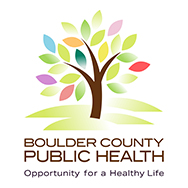TB Can Be Contagious
TB is caused by a germ called Mycobacterium tuberculosis. TB germs are spread through the air from one person to another. The TB germs are put into the air when a person with active TB disease of the lungs or throat coughs, speaks, or sings. People nearby may breathe in these germs and become infected. Infection usually occurs when a healthy person and a person with active TB disease are in close contact in an enclosed space with little fresh air and over a long period. Even under these conditions, people often do not become infected.
TB is NOT spread by shaking someone’s hand, sharing food or drink, touching bed linens, toilet seats, or tissues, sharing toothbrushes, or kissing. It can only be spread by breathing air containing TB germs.
Inactive TB Infection
A person’s body may kill all the TB germs on its own. If the TB germs remain alive but inactive in the body, this is known as TB infection. People with TB infection are not sick and cannot make others sick, but they may become ill if not treated.
A Person with Inactive TB
- Has a small amount of TB germs in their body that are alive but inactive.
- Has no symptoms and does not feel sick.
- Cannot spread TB germs to others.
- Usually has a positive TB blood test or TB skin test indicating TB infection.
- Has a normal chest x-ray and a negative sputum smear.
- Needs treatment for inactive TB to prevent active TB disease.
Active TB Infection
When the body cannot suppress the infection, the person may feel sick and can infect others—especially people they spend time with every day. This includes family members, friends, coworkers, or schoolmates. This is called active TB disease. People with active TB disease must receive treatment, or they will become very sick and can continue to infect others.
A Person with Active TB Disease
- Has a large amount of active TB germs in their body.
- Has symptoms and feels sick.
- May spread TB germs to others.
- Usually has a positive TB blood test or TB skin test indicating TB infection.
- May have an abnormal chest x-ray, or positive sputum smear or culture.
- Needs treatment for active TB disease.



